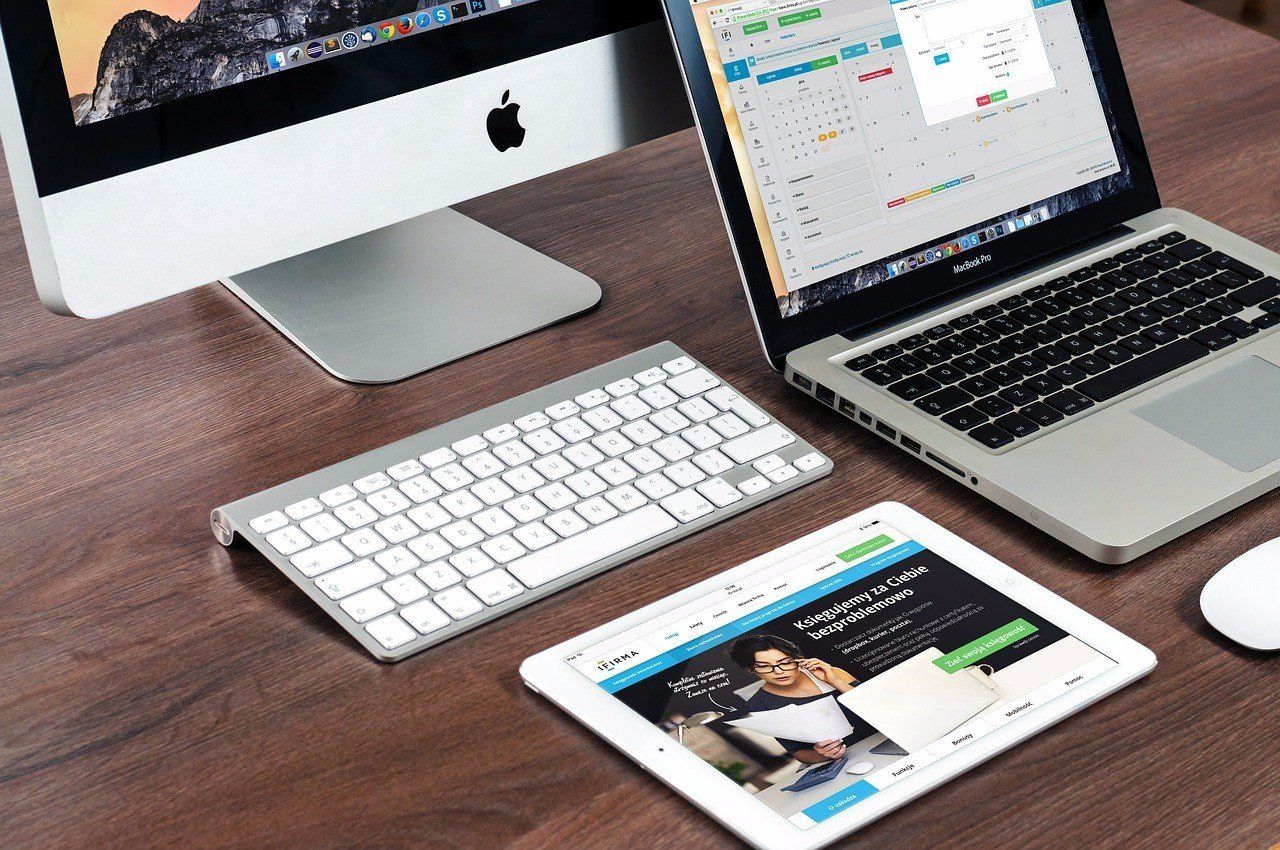Does Looking At My Phone Hurt My Eyes? And What Exactly Is Blue Light?
Smart phones, computers, and tablets have become a big part of almost everyone’s daily lives. Thanks to social media apps like Facebook, Instagram, and Twitter, it is easy to spend an upwards of 8 hours on technology between both work and play. So what does this mean for your eyes exactly? Does spending a lot of time on your smartphone or computer cause damage to your eyes or your vision? The answer might surprise you, so make sure to read to the end. Let’s take a look.
Digital Eye Strain
The What
Those who work primarily in front of a computer screen on a daily basis are probably familiar with digital eye strain aka computer vision syndrome (CVS) even if they have never heard the term. A few of the common CVS symptoms you might experience after a full day of work on a computer or tablet are:
- Blurred vision
- Dryness
- Headaches
- Neck and shoulder pain
- Eyes that feel tired
- Mild burning
So what exactly causes digital eye strain? There are a number of contributing factors that can make your peepers feel fatigued. In general, viewing digital screens makes the eyes work harder than they would normally when viewing a piece of paper for example. This is because the text typically isn’t as sharp. Also, the contrast between the background and the words or images isn’t as high, making your eyes strain to differentiate between the two. There can also be struggles with glare and reflections on the screen. Even the angle at which you view your handheld devices and computer screen can cause added stress on your eyes and body.
The Who
Anyone who spends two or more consecutive hours on a computer or handheld electronic device can experience a degree of digital eye strain. Although the symptoms will vary by individual, they usually worsen as the amount of time spent on the computer increases.
Digital eye strain can affect you even if you currently wear glasses or contacts. This is especially true if you are in a pair that aren’t meant specifically for computer use. Since computer monitors typically sit at an intermediate distance in between the correctional powers of traditional near or far prescriptions, your current correction could actually be making your eye strain worse if you spend a lot of time on a computer or handheld device.
What You Can Do
To help alleviate the symptoms of CVS or digital eye strain, there are several suggestions you can follow after narrowing down the cause or causes of your discomfort.
- The 20-20-20 Rule -
If you will be on the computer for many hours at a time, make sure for every 20 minutes of work you do that you look 20 feet away for at least 20 seconds.
- Positioning Your Computer Monitor -
As a general rule of thumb, your computer screen should sit 15-20 degrees below eye level and the center of your screen should be around 20-28 inches from your eyes.
- Positioning Your Working Materials -
Any papers, files, or other working materials should ideally be positioned above the keyboard but below the monitor. You can purchase inexpensive document holders to help assist with this if needed.
- Lighting -
Make sure there are no reflections or glares on your screen. If your computer or work station is located in an area where this simply cannot be helped, there are anti-glare filters that can be attached to your monitor.
- Body Positioning -
A padded chair will provide the best support and comfort for long hours in front of a screen. Your feet should rest flat on the floor and wrists should not rest on the keyboard when typing.
- Conscious Blinking -
Your eyes will blink less when you are doing tasks such as reading or working on a computer or handheld device for long periods. Make sure to make a conscious effort to blink more to keep your eyes lubricated.
- Visit Your Eye Doctor - If you have a prescription that isn't currently being corrected with glasses or contact lenses, you will likely be experiencing the symptoms of general eye strain on top of digital eye strain which makes for an all around uncomfortable situation. Even if you do currently have glasses or contacts, if they aren't specifically designed to help you at the computer they are likely contributing to your discomfort. Luckily there are special lens powers and designs that your doctor can prescribe to help keep your eyes feeling their best - even if you end up not needing any correction.
Blue Light
While digital eye strain can definitely impact your daily life, it doesn’t cause any sight threatening issues. However, newer studies have linked an increased risk of the vision stealing disease macular degeneration with the blue light emitted from electronic devices such as smartphones, tablets, computer screens, and even flat screen tvs.
In extremely condensed terms, blue light is a form of high energy light on the visible light spectrum. While the most common source of blue light is provided from the sun, indoor technology such as computers, flat screen tvs, and handheld devices emit it as well. Although the amount of blue light you are exposed to is only a fraction of what you get from the sun, when you spend large amounts of time on these devices at such a close proximity to your eyes, that amount adds up pretty quickly.
Furthermore, because the frequency of blue light is so high, the eye has a hard time blocking it on its own. This means that almost all of the blue light you are exposed to reaches your retinas. In addition to contributing to digital eye strain, this exposure to blue light also causes damage to the light sensitive cells in the back of the eye. This is where the risk of macular degeneration becomes increased along with the risk for acquiring it much earlier in life than you normally would.
What This Means For Kids
All of this exposure is especially dangerous for children. With kiddos as young as three years old now watching videos and playing games on iPads, they will be exposed to this damaging light for a much longer time span than today’s adults. Plus, children hold things fairly close to their faces and since most kids this young don’t wear glasses they have zero protection from the blue light.
There is also new research that links excessive handheld device usage in kids with developing crossed eyes as well as an increase in acquired nearsightedness.What You Can Do
- Blue Light Protection - The most important thing you can do for your eyes if you spend a lot of time on computers and handheld devices is to get a pair of glasses with blue light protection. Even if you are lucky enough to not need glasses to improve your vision, it is still a good idea to have a pair of blue light deflecting glasses to use at your computer since these can be made with or without prescription powers in them.
- Sunglasses -
Of course sunglasses will protect your eyes from the UV rays as well as the blue light emitted from the sun. They will also shield you from premature cataracts as well as cancer of the eye and lid.
- Limit Screen Time - If you work in an industry where you are required to be on a computer for most of the day, this might not be possible. Just remember the 20-20-20 rule mentioned above as well as the other tips to help combat digital eye strain. For your kiddos it's hard to come up with a specific number of time that they should or should not spend on electronic devices. Just use your best judgement and make sure they are getting a good balance between playing on the computer and playing outdoors. And again, make sure to see your eye doctor for blue light protection for both you and your little ones.






